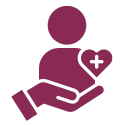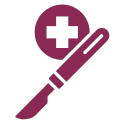Our Medical Experts
Meet our expert team of Pulmonologist where compassionate care meets expertise.

A bronchoscopy is a procedure that allows a doctor to examine the respiratory tract and diagnose lung diseases. It is performed using a bronchoscope which is a thin tube with a camera fitted to it. Through this instrument, the doctor is able to see the voice box, trachea, large and small airways to the lung.
Persistent cough
Coughing out blood
Trouble breathing
Tumors or bronchial cancer
Inflammation and infection such as pneumonia, Tuberculosis, Parasitic lung infections.
Findings on a chest X-ray or CT scan
Diagnose a lung problem
Spot a lung infection
Conduct a biopsy of lung tissue
Remove a blockage
Put a stent into an airway to hold the airway open
Treat a lung problem, such as bleeding or a collapsed lung
Look at lymph nodes near the lungs
Draining an area of pus
The procedure is performed using a flexible bronchoscope or a rigid bronchoscope. Flexible bronchoscopy is more common than rigid bronchoscopy, and flexible bronchoscopy usually does not require general anesthesia. Before the procedure, medicine is given to relax the patient. A liquid medicine may be given to numb the nose and throat. Some patients would require oxygen therapy. A numbing medicine is sprayed into the back of the throat to prevent gagging when the tube is inserted. The spray may have a bitter taste.
Bronchoscope is inserted and the inside of the respiratory tract is visualized using a camera. If required, a biopsy or mucus sample is taken.
After the procedure one will have to stay in the recovery room for some time, where the pulse, BP and respiration are monitored. A chest X-ray may be done to make sure that lungs are okay. One might have some mild pain in the throat and may not be allowed to eat or drink till gag reflex has returned.
Meet our expert team of Pulmonologist where compassionate care meets expertise.
Listen to what our valued patients have to say about their experience at Miracles Healthcare
Miracles Apollo Cradle is a leading Maternity Hospital Gurgaon. We strive to give the best care to our patients.






Your Health, Our Network: Comprehensive Care Across Every Facility.
At Miracles Healthcare, we redefine care by providing comprehensive well-being solutions all under one roof, eliminating the hassle of navigating multiple facilities and locations for your complete peace of mind.
Dive into a world of wellness wisdom with our engaging health blogs.
Learn about the world class health care we provide
Bronchoscopy is done to examine the airways. It helps find the cause of cough or breathing issues, remove mucus or foreign objects, and take samples for testing.
Yes. Bronchoscopy can help detect lung cancer by allowing the doctor to see abnormal areas and take tissue samples.
Complications are rare but may include bleeding, infection, hoarseness, fever, or breathing difficulty.
Yes. Bronchoscopy can collect samples from the lungs, which help confirm TB when other tests are unclear.
Most people recover within a few hours, with minor throat irritation or a cough that settles in a day.
Most patients do not feel pain because numbness and sedation are given, but mild throat discomfort can occur afterward.
It is recommended for chronic cough, lung infections, bleeding, abnormal X-rays, airway blockage, or to take biopsies.
The two main types are flexible bronchoscopy and rigid bronchoscopy.
Doctors suggest it when they need a closer look inside the airways to diagnose infections, tumors, blockages, or unexplained breathing problems.
Miracles Apollo Cradle/Spectra is one of the best hospitals for bronchoscopy in Gurgaon, offering advanced technology and experienced pulmonologists.